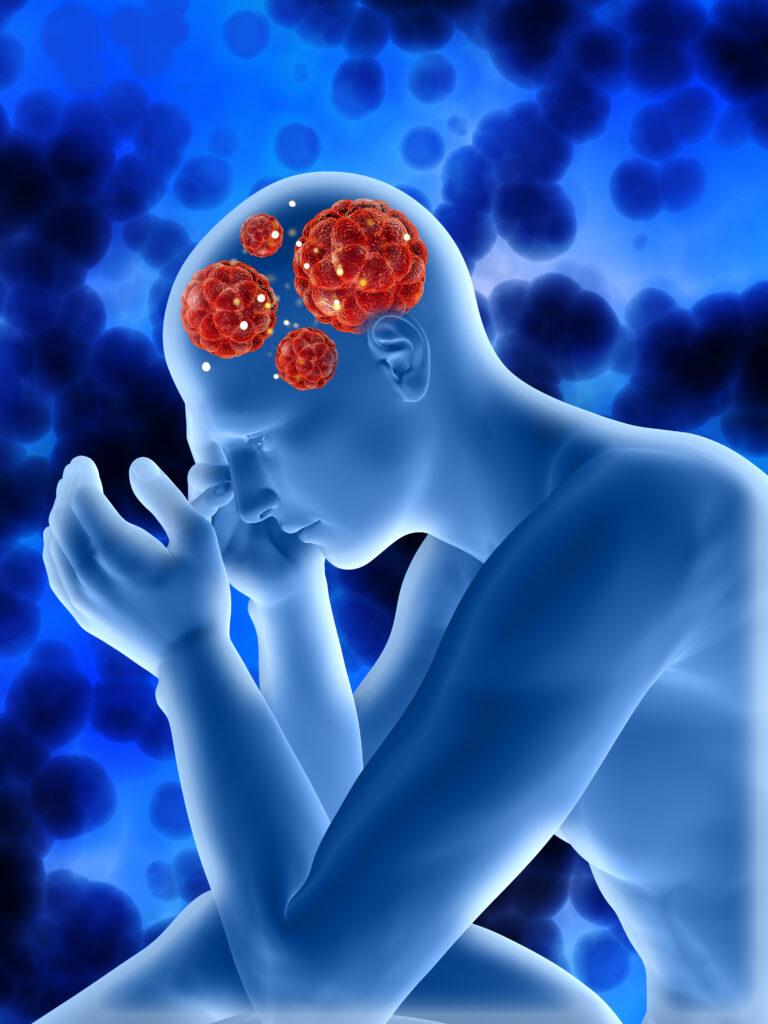Fibromyalgia is a chronic condition characterized by widespread pain in muscles and bones, tender points and general fatigue. The condition presents with subjective symptoms and cannot be confirmed by any test. While no definitive cause of fibromyalgia is known, it is thought that various factors can trigger the disease.
These include infections, genetic factors, trauma, stress and personality.
Fibromyalgia points include 18 different areas that cause pain when light pressure is applied. However, these points are not usually used for diagnosis today. The diagnosis is usually made on complaints of widespread pain lasting more than three months and laboratory tests are not used to make a specific diagnosis.
What are the symptoms of fibromyalgia?
Fibromyalgia is more common in women and is more common in people with a family history of the condition.
- Fatigue
- Sleep problems
- Not feeling rested despite sleeping for a long time and having difficulty getting out of bed
- Headache
- Depressed mood
- Anxiety
- Difficulty focusing or paying attention
- Pain in the lower abdomen
- Difficulty breathing
- Ringing in the ears
- Lack of resistance to exercise and rapid fatigue
Who is more likely to have fibromyalgia? What are the Risk Factors?
Fibromyalgia is more common in women than in men. 80 to 90% of patients are women. People with a family history of fibromyalgia have a higher incidence of the disease.
Although fibromyalgia is not a form of arthritis, having a rheumatic disease such as lupus or rheumatoid arthritis can also increase the risk of developing the disease.

How do fibromyalgia attacks happen?
Usually, worsening pain and increased fatigue are the hallmarks of a fibromyalgia attack.
During an attack, symptoms such as poor sleep quality, pessimistic negative thoughts, digestive problems such as acid reflux, swelling, numbness and tingling in the extremities can increase.
When fibromyalgic pain is in the chest area, it can resemble the symptoms of a heart attack. The pain can be sharp, piercing and burning, and there may also be difficulty breathing. Pain in the legs can be similar to cramping, burning, throbbing and rheumatic pain, sometimes with tingling or numbness.
How is fibromyalgia diagnosed?
According to the updated diagnostic criteria, fibromyalgia is diagnosed in patients who complain of widespread pain that has persisted for three months or longer and is not based on a medical cause. There is no laboratory test that can detect fibromyalgia. Blood tests can be used to exclude other causes of chronic pain.
What are the fibromyalgia points?
Fibromyalgia often involves areas of the body called trigger points or tender points. Fibromyalgia points include 18 different areas that can cause pain even with light pressure. Today, these points are rarely used to diagnose fibromyalgia. Instead, they may be preferred as a way to rule out suspected diseases. The pain caused by these trigger points can be described as a consistent dull pain that affects many parts of the body.
According to the old method, fibromyalgia is diagnosed if there is widespread pain and tenderness in at least 11 of the 18 known trigger points.
TREATMENT OF FIBROMYALGIA WITH HOLISTIC MEDICINE
Physical therapy, functional and holistic medicine approach and relaxation techniques can give effective results in the treatment of fibromyalgia.
- The following factors play an important role in fibromyalgia
- Chronic inflammation
- Leaky Gut
- Food intolerances
- Oxidative damage
- Mitochondrial dysfunction
- Chronic toxicity
- Mental Emotional System Problems
As with other chronic diseases of unknown cause, the Western medical approach to fibromyalgia treatment focuses more on symptom suppression than on addressing the underlying root causes of the disease. This often involves the use of painkillers, antidepressants, anti-rheumatic drugs and medications for neuropathic pain.
In the short term, these medicines can provide relief and reduce pain. In the long term, however, other problems may arise due to side effects of the medication. Treatment with medication alone is often insufficient to provide a lasting cure.
What are we doing?
- Acupuncture
- Cup
- Ozone
- Trigger point Injections
- Prolotherapy Injections
- Neural Therapy
- Manual Therapy
- Massage therapy
- A balanced and healthy diet
- Regular exercise
- Healthy Sleep
What to Pay Attention to in Nutrition Fibromyalgia Patients
Avoid foods containing gluten: There is research showing a close relationship between gluten sensitivity and fibromyalgia. In patients diagnosed with fibromyalgia, cutting out wheat products often leads to a rapid improvement in symptoms such as chronic pain, fatigue and sleep problems.
Avoid sugary sweeteners: It has been scientifically shown that sugary sweeteners found in diet drinks and diet foods, especially aspartame, can trigger fibromyalgia symptoms. Aspartame can cause fibromyalgia symptoms to worsen by overstimulating the pain receptors in our nervous system.
Beware of monosodium glutamate (MNG): Found in many products such as soups, salad dressings, bouillon, chips and wafers, MNG is known as an excitotoxin and can trigger fibromyalgia symptoms. It is therefore important to focus on functional nutrition in fibromyalgia treatment.
Limit some vegetables: Vegetables from the nightshade family, such as eggplant, tomatoes, peppers and potatoes, can be triggers for some fibromyalgia patients. Temporarily eliminating these vegetables from the diet helps to assess whether there is a relationship between them and symptoms.
Do not neglect exercise: It is important for people struggling with fibromyalgia to exercise regularly. Functional exercises such as Pilates and yoga can be very effective in improving the quality of life of patients.


